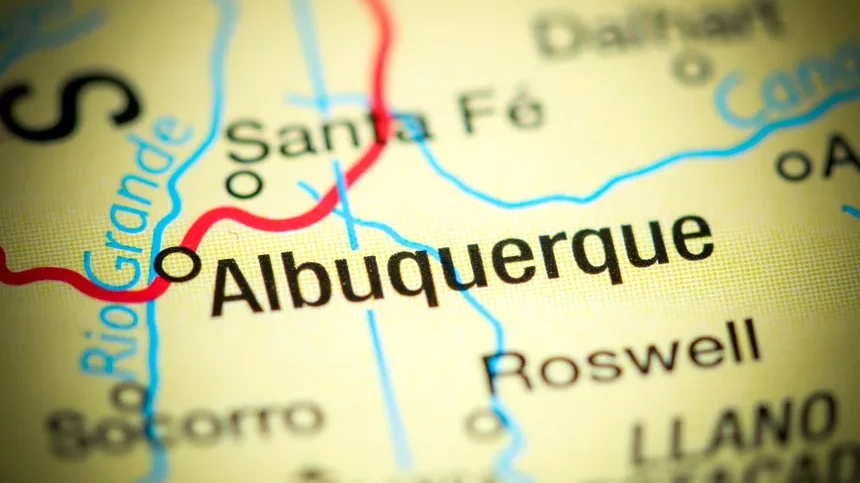Addiction Treatment: Albuquerque
Table of Contents
- Addiction Treatment: Albuquerque
- An Urgent Need for Substance Abuse Treatment in Albuquerque, NM
- A Clear and Present Requirement for Drug Detox in Albuquerque
- Finding Meth Rehab in Albuquerque
- Albuquerque’s Improved Approach to Substance Abuse Treatment
- Support for the Albuquerque Addiction Recovery Community
- Addiction Treatment Services for Albuquerque, NM Residents
- Aftercare in ABQ: Finding Long Term Sobriety in New Mexico
There’s no easy way to say it, but Albuquerque, NM, has a massive problem with substance abuse. Over the years, the city has had more than its fair share of tragedy, crime, and death due to addiction.
The city’s drug issues rank among one of the worst in the United States. Some alarming facts are associated with Albuquerque’s drug issues, and a few are almost unbelievable.
An Urgent Need for Substance Abuse Treatment in Albuquerque, NM
As New Mexico takes steps to improve challenges associated with addiction, several vital points exist regarding the substance abuse in the region.
1. Causes of Death
Each of the top ten causes of death in Albuquerque, NM, is directly associated with substance abuse. A report in 2015 highlighted the fact that the leading ten causes of death were:
- Chronic liver disease (alcohol)
- Cirrhosis (alcohol)
- Unintentional injuries (alcohol)
- Suicide (alcohol)
- Flu (tobacco)
- Pneumonia (tobacco)
- Lower respiratory diseases (tobacco)
- Heart disease (meth, tobacco)
- Malignant neoplasms (All)
This is only the top ten. Drugs heavily influence other rankings, including car accidents, murders, etc. The following fact ties in directly to number one.
2. Overdoses and the Need for Opiate Detox in ABQ
In 2018, Albuquerque, NM, had the 15th highest rate of drug overdose deaths in the nation. This is 29% higher than the rest of the country.
Drugs behind the overdoses range from meth to heroin to alcohol. Last year heroin led the way with the highest number of overdose deaths.
3. Alcohol Detox Albuquerque – Another Needed Resource
The most populous city in New Mexico leads the nation in alcohol-related deaths. What is even more alarming is that they’ve held on to this number one spot since 1997. Furthermore, it leads in the categories where alcohol is directly attributable (drunk driving accidents, alcohol poisoning, liver diseases), and a portion of those where alcohol is partially to blame. Chronic liver disease makes up over 1/3rd of all of these deaths.
4. Accidental Overdoses in ABQ
Almost 90% of all drug overdoses in Albuquerque are accidental. You are probably asking, “well, aren’t all overdoses accidental?”
Technically, most of them are, yes. But these are overdoses where the person just wasn’t aware of what they were taking or the consequences of taking too much.
This is directly attributed to a lack of awareness. In many cases, these deaths were easily preventable.
A Clear and Present Requirement for Drug Detox in Albuquerque
Substance abuse remains a severe problem in the city. In 2014, there were over 5,000 drug-related arrests in Albuquerque, according to the FBI. This is despite the fact the city’s population is only about 550,000 people.
The city’s per capita rate of drug overdose deaths is nearly three times higher than the national average. And according to the most recent FBI statistics, Albuquerque has more violent crime per capita than any other city in New Mexico.
What is the Recipe for Drug Treatment Albuquerque?
Why is substance abuse so bad in Duke City, and how did it get to this point?
The answer to this is twofold: In the past, a lack of substance abuse resources plagued the city and the combination of residents lacking insurance and unable to afford counseling or treatment.
However, the city has been aggressively working to rectify this situation. New Mexico ranked as one of the worst states for substance abuse treatment.
Currently, they rank number nine out of all fifty states, which is a drastic improvement, giving significant cities such as Albuquerque hope for the future. The other driving factor pushing Albuquerque to the brink is more insidious and, unfortunately, out of the hands of most city and state-level officials.
Drug Trafficking and Addiction in Albuquerque, NM
Albuquerque has long been considered a destination for drug trafficking because of its proximity to the Mexican border and its position along major interstate highways. Drug trafficking organizations have been using the city as a hub since the 1970s.
Today, Albuquerque serves as a distribution center for at least 10 percent of all illegal drugs in the U.S., including heroin and methamphetamine. This is because Albuquerque is located along Interstate 40, which connects Texas with California and Arizona.
This route has become known as “the cocaine highway” because it’s one of the most common routes for drug traffickers to transport their goods from Mexico into the United States. Drug traffickers often drop off shipments along I-40 until they reach their final destination (typically somewhere around Los Angeles).
Other cities along this route include Phoenix and Las Vegas. Still, Albuquerque is a pivot point where shipments are separated for delivery west to the cities above or shipped east to Amarillo, Oklahoma City, Little Rock, and Memphis.
The Southwest region of the United States has always been a prime location for drug trafficking because of its proximity to Mexico and other Latin American countries with lax enforcement policies. Most of the cocaine that makes it into the United States comes from Colombia or Venezuela and travels through Mexico before reaching its destination.
Finding Meth Rehab in Albuquerque
However, in recent years, cocaine has taken a back seat to potent P2P meth, black tar heroin, and fentanyl. The prevalence of drugs in Albuquerque has made them easy to obtain and inexpensive — two factors contributing to higher rates of use among teens than in most other states or cities across the country.
In addition, many teens who start using drugs do so because they think it will help them fit in with their friends or peers at school or elsewhere in their community. Teens may be especially susceptible to peer pressure because they are still developing mentally. And with a lack of outreach programs in the past, the problem has come to a head.
Despite the challenges, Albuquerque continues to approach the situation head-on. As we mentioned previously, the city of Albuquerque and the state of New Mexico have made leaps and bounds compared to 10 years ago.
Albuquerque’s Improved Approach to Substance Abuse Treatment
Substance abuse treatment in New Mexico is changing, and it’s changing for the better. In fact, according to a recent report by the Substance Abuse and Mental Health Services Administration (SAMHSA), New Mexico is leading the nation in reducing drug-related deaths.
Since 2000, deaths from heroin, prescription painkillers, and meth have decreased by more than 50 percent. This is shocking because Albuquerque is still number 15 on the list of overdose deaths, but the city continues to make headway and remains hopeful.
This is good news but not surprising given the state’s efforts to combat the opioid epidemic through various initiatives, including increasing access to treatment options like medication-assisted therapy (MAT) and establishing opioid prescribing guidelines for doctors.
Using Data to Combat Substance Abuse in Albuquerque, NM
One of the most significant changes is that New Mexico started using a data-driven approach to treatment. Traditionally, states have used an abstinence-based model for treating addiction — meaning that patients are required to stay sober for the length of their treatment. But many people can’t do that and relapse quickly. They need more flexibility for sobriety, so they have a better chance of staying clean long term.
New Mexico switched from an abstinence-based model to one that’s more flexible and allows patients to continue using drugs or alcohol while in treatment as long as they’re still working toward recovery goals. The state also implemented a program called “rapid response,” which refers people with substance abuse issues directly into treatment rather than waiting for them to get arrested first before helping them out with their addictions.
Support for the Albuquerque Addiction Recovery Community
The number of people receiving treatment for alcohol or drug problems in New Mexico increased by nearly 50 percent between 2005 and 2016, exceeding national trends by 10 percent. The increase is related to increased funding for substance abuse programs and efforts to expand access to care across the state. For example:
More than $6 million was allocated to expand services at community-based treatment providers in 2015 alone.
These funds were allocated to expand services at community-based treatment providers across New Mexico through the state’s Substance Abuse Prevention and Treatment Block Grant (SABG). This grant provides federal funding for prevention, treatment, and recovery services across New Mexico and has supported programs like the New Mexico Peer Education Project (NMPEP), which trains inmates as peer leaders able to educate on the dangers of substance abuse.
In a city that once approached substance abuse as a foreign term, people from across the country are now traveling here to access premier care levels. If you’re thinking about making your pilgrimage a permanent situation, other opportunities exist for residential and economic growth.
Addiction Treatment Services for Albuquerque, NM Residents
Albuquerque is one of the best places for alcohol and drug rehab for those who have come to New Mexico for treatment. There are various treatment options available in Albuquerque that can accommodate people’s needs, including inpatient programs and outpatient services.
Albuquerque has many affordable housing options available for those looking to move here for substance abuse treatment. There are low-income apartments available and sober living homes where you can live while working on your recovery.
Albuquerque also has an active social scene with plenty of restaurants and gathering places where you can spend time with other people in recovery and enjoy fun activities like hiking or biking through the beautiful scenery surrounding the city.
Aftercare in ABQ: Finding Long Term Sobriety in New Mexico
Alcoholics Anonymous meetings are also available throughout Land of Enchantment. In addition, several 12-step programs focus on specific drugs and substances. These programs include Narcotics Anonymous (NA), Cocaine Anonymous (CA), and Crystal Meth Anonymous (CMA).
Albuquerque is home to two major universities: the University of New Mexico (UNM) and Central New Mexico Community College (CNM). The city also has several small colleges that offer associate’s degrees in a wide range of majors.
The cost of living in Albuquerque is below average for cities across the country; however, housing costs are more expensive than in other areas in New Mexico. According to Zillow, the median home value is approximately $189,600, while median rent prices are around $1,000 per month, according to RentCafe.com.
However, assistance programs are available for people who participate in treatment or live below the economic average. For more information on substance abuse treatment in Albuquerque, Find Addiction Rehabs can help match you to the appropriate facility based on your needs and insurance options. Call their dedicated recovery representatives now for a fast and free rundown of the top options available!
Brandon is a highly skilled content writer and behavioral health marketer with over a decade of experience. In his own words: in my work with Find Addiction Rehabs, I have dedicated my expertise to a cause close to my heart – substance abuse recovery. Through my passion for the field, I’ve successfully compiled a track record of crafting compelling content that educates, inspires, and supports those on their recovery journeys.



